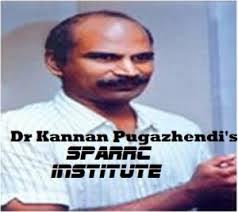How do we store, spend and refill energy
Where does the body store its energy?” asked my sister. “Where would you store the money I give you?” asked dad. My sister pulled out her purse and said, “Here, I have Rs 500 for any emergency that may arise and another Rs 150,” my sister said.
“Where is the hundred that you borrowed from me?” daddy turned to me.
“I gave it to my friend who fell short of the tuition fees, we all pooled in money,” I said. “It’s a sad situation. The boy’s father was trying to sell some property as the recession hit his business. I think the boys fixed the whole problem themselves, with of course their parents’ approval,” mother said.
“This is the ideal situation for us to understand the energy stores of the body. The money in your purse is like the Adenosine Triphosphate (ATP) in the muscle. It is the energy currency in the body stored for immediate use. It would be exhausted within 3 to 5 seconds — perhaps a sprint of 30 to 40 metres is all one could sustain. During this time, the ATP stored in the muscle is converted into Adenosine Diphosphate. If the sprint continues, it requires alternate energy source. Just like your brothers’ friends who pooled in money, Creatine Phosphate jumps in spontaneously to donate the phosphate molecules. This way the muscle continues to work for another 10 to 15 seconds. The high energy phosphagen system uses the local stores of ATP in the muscle. It is pooled in through the donation from the ‘creatine’ friends. This does not require the presence of oxygen,” dad said.
“If you continue to sprint, then the special store kept as contingency is used. Similarly, the stored glucose in the muscle called as myoglycogen is utilised without the presence of oxygen for the production of the ATP. This is called as anaerobic lactate system.”
“Lactic acid is the final product of this breakdown of glucose called as glycolysis. These two systems are totally dependent on the local stores and would be tapped when the need is immediate. The sprinter cannot continue as the lactic acid changes the working  condition within the muscle. The sprinter pants for breath supplying the excess oxygen required to repay the oxygen debt created. This way the muscle replenishes ATP in the liver. ”
condition within the muscle. The sprinter pants for breath supplying the excess oxygen required to repay the oxygen debt created. This way the muscle replenishes ATP in the liver. ”
“The parents give money to their kids. Similarly, the glucose stored in the liver is accessed,” my father said.
“The energy required beyond the muscle stores is supplied from the liver. The transaction requires time and our approval or the presence of oxygen, through which more energy in the form of ATP, is made available as stored glucose in the liver. So the intensity of the exercise is relatively slower and it is called as aerobic.”
“The bank is replenished regularly with the money received by your dad as salary. The food that we eat is the regular replenishing source. If there is overnight fast and the balance of glucose is reduced in the liver, it is not possible for us to exercise well in the morning,” mother said.
“That is why you cannot go to bed without eating your dinner or skip any meal for that matter. It would be detrimental to the quality of exercise. If we make a lot of money we may then buy property. The excess energy in the body is stored as fat, the best form of storage. The property would not be sold, unless a crisis is encountered. Just the way the friend’s father did.”
“The exercise needs to exhaust the glucose present in the liver and then tap the fat source. This would require moderate exercise intensity for a period of 30 minutes to switch over for a fat source as fuel.”
“It is not easy to sell property once you have bought it. In the body, buying property is easy — you eat fat, but selling it is difficult. Outside the body buying takes more effort than selling,” father added.


